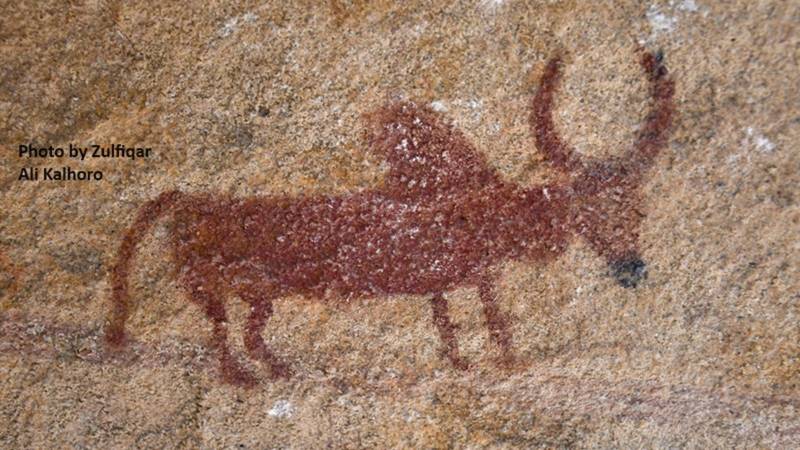
Like other provinces of Pakistan, Balochistan has many rock art sites. With their rich history and cultural significance, these sites have become a significant area of study for scholars and enthusiasts. The growing field of rock art studies in Pakistan underscores the importance of rock art heritage in the country. Pakistan has petroglyphs and rock paintings, with the earliest rock paintings believed to be located in several districts of Balochistan, showcasing the region's rich cultural diversity. These rock art sites in Balochistan offer a unique glimpse into the region's historical and cultural legacy.
The earliest rock painting specimen is thought to be found at Malvi in the Musakhel district. Professor Dr Muhammad Nasim Khan (2000) writes in his book The Buddhist Paintings of Gandhara that nine rock shelters at this site depict a diverse range of prehistoric and pre-Buddhist art. He believes that the Musakhel paintings represent humans and animals that are painted in red or black on the undressed surfaces of caves or rock shelters. According to him, some animals are shown in bi-triangular form, rendering the body in two triangles coalescent at the corner. He believes this method is typical of the Neolithic Period and Early Bronze Age and is commonly used in the rock engravings of the Upper Indus Valley. The subject matter of the Musakhel paintings is 'fighting and hunting' representations.
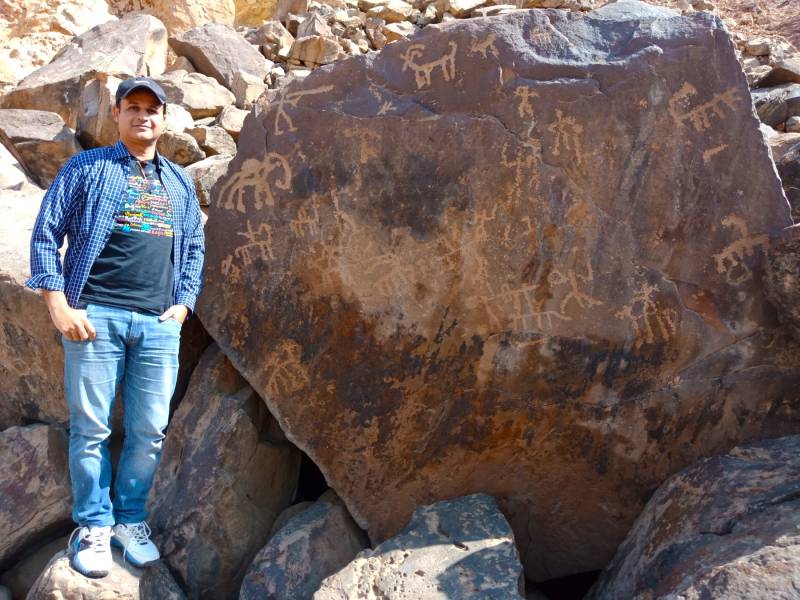
It is said that they were first reported by Dr Fazal Dad Kakar, Former Director General of the Department of Archaeology and Museums, who believes they are from the Upper Palaeolithic Period. Several scholars later visited this site. Badar Abro, a Sindhi scholar and historian, also visited the site and reported that the rock paintings were not from just one period. He also mentioned the existence of a cave. According to Badar Abro, Malvi's rock paintings span the prehistoric, Iron Age, Buddhist, and historical periods, showcasing the diversity of rock art across different eras. The rich and complex history of the region is vividly portrayed in the diversity of eras represented in the rock art at Malvi, a fact that continues to intrigue scholars and historians.
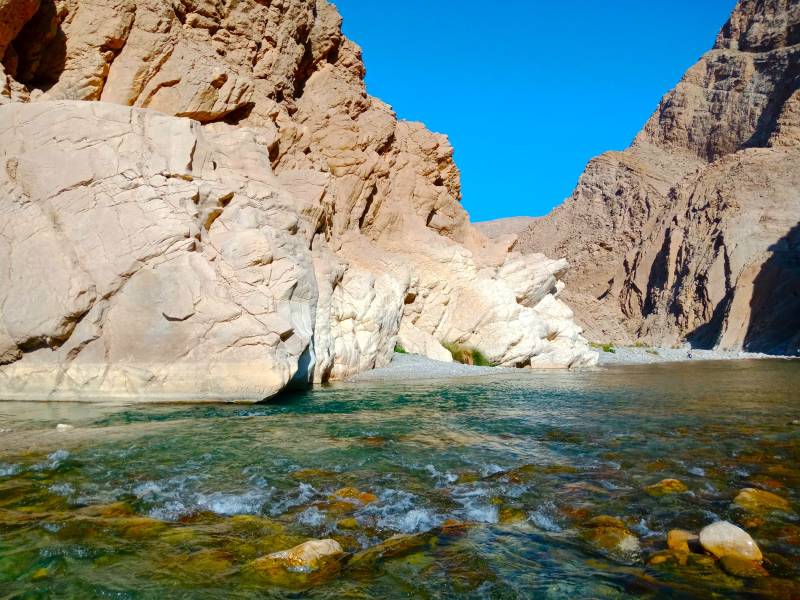
Furthermore, Badar Abro writes in Khirthar men Chitsali: Budhiyah Jo Safar (2011:52) that it was the keen eye of Abdul Rahman Asodan, a local of Musakhel, who played a key role in the discovery of the rock painting in 1995. His local knowledge and keen observation skills led to reporting its existence to the Pakistan Archaeology Department. This discovery was later systematically documented by Fazal Dad Kakar. Badar Abro, a passionate rock art explorer, visited the site on 14 December 1997. He reports pictograms of Malvi’s Buddhist and historic periods. Badar Abro's significant contributions to the discovery and documentation of rock art in Sindh and in Balochistan, including the Malango rock site in Khuzdar’s Jamuro area, are a testament to his dedication and passion for preserving the country’s cultural heritage. Malango rock art site in Khuzdar is noted for its depictions of Buddhist stupas and bulls.
Mian Saeed Qamar's seminal work on Balochistan’s rock art was published in the Journal of Pakistan Archaeology (1974-1986). In the article, he discusses rock carvings and inscriptions at Tor Derai, which is located in the Loralai district. Brig (Rtd) Muhammad Usman Hasan was a keen explorer and wrote valuable articles on Balochistan’s cultural heritage. In his book “Baluchistan: A Retrospect (2002), " he discusses a few rock art sites that he probably discovered. He mentioned Olangi Tangi, Gambadi, Meena Bazaar, and others in the Kharan district.
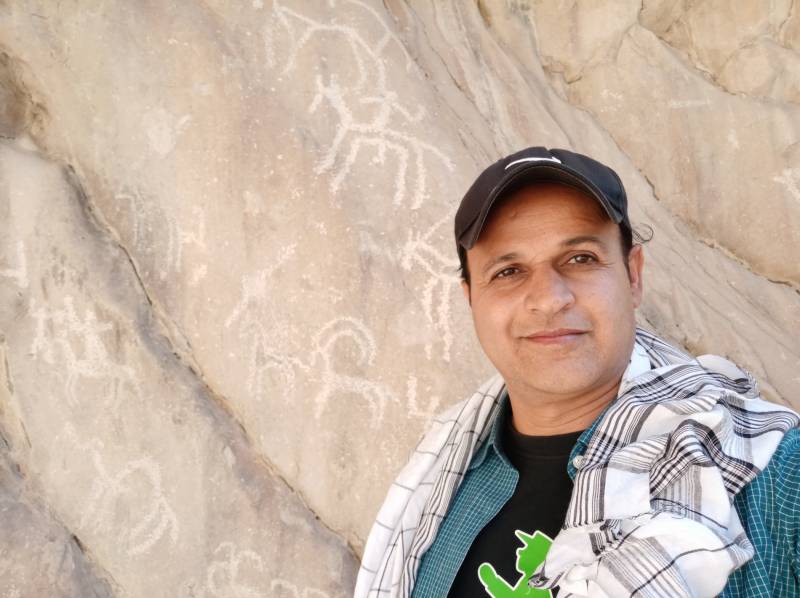
Recently, many discoveries have been made by young scholars, travellers, and laymen in Balochistan. Rock art sites have been reported from Zhob, Loralai, Kila Saifullah, Ziarat, Kharan, Washuk, Khuzdar, Jhal Magsi, Lasbela and other districts of Balochistan. The list of young scholars, travellers and explorers is very long. However, Abdul Salam Nasar’s discoveries in Zhob district are pretty revealing. This young scholar is doing tremendous work by bringing to the international limelight the rock art heritage of Zhob. Likewise. Muneer Marri, a local tourist guide from Kohlu, found a rock art site, and he shared some photos with me to learn about the antiquity of rock carvings. Dr Atta Ur Rehman, from Basima tehsil of Washuk district, shared pictures of rock paintings from his village. He wanted to know the history of paintings. I shared my interpretation of the pictures with him.
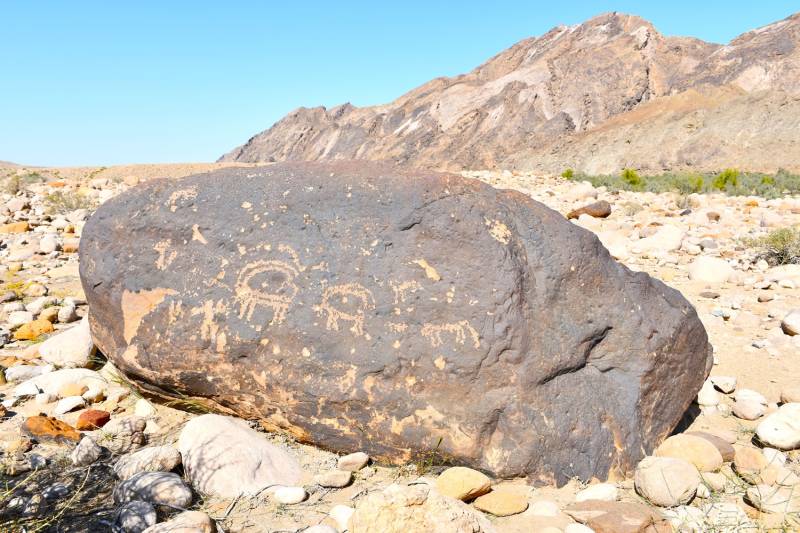
I have also discovered several rock art sites in the Jhal Magsi and Khuzdar districts, which I have discussed in detail in my forthcoming book “Rock Art of Balochistan. I had the opportunity to explore the challenging terrain of Jhal Magsi with the gracious assistance of Mir Aamir Khan Magsi, a politician and a member of the National Assembly of Pakistan. Without his help, moving from one valley to another along the Mula River would have been very difficult. He provided security and a vehicle to visit the sites accessible by vehicle, as most of the places along the Mula River could only be reached by hiking. I was fortunate to discover some of the oldest rock art sites in Mula river. I also visited the Mehar Tuk rock art site in the Khari hill stream located west of Gadava town in Jhal Magsi. Maher Tuk rock carvings are mainly historic period. Rock carvings are found on boulders. Fighting scenes, animals, and other themes are depicted on a large boulder. A depiction of the gunmen is also seen on a boulder. Some grid-like patterns are also found at the Maher Tuk rock art site that may represent the plans of the buildings.
The rock art sites of Jhal Magsi can be categorised into prehistoric and historic periods.
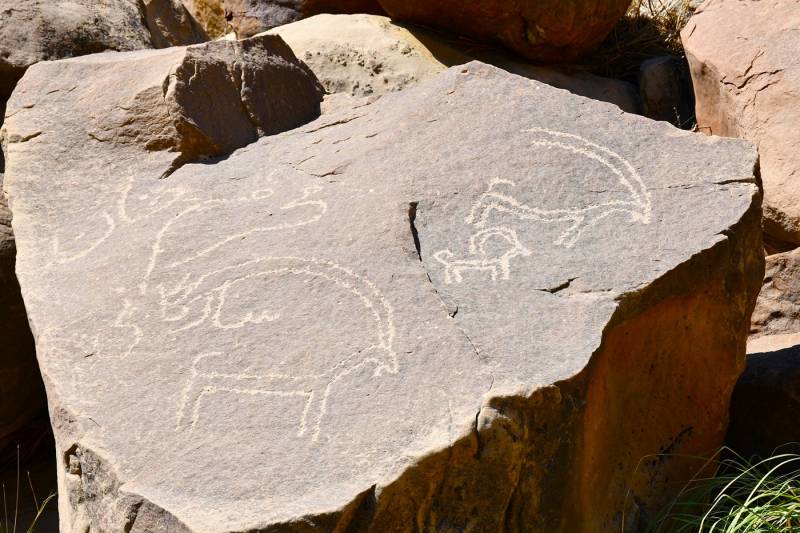
Prehistoric petroglyphs are located in the side valleys of the Mula River, and some contemporary petroglyphs can also be seen in the side valleys of the Mula River. In one of the side valleys, one notices depictions of deer, camels, ibex, birds, anthropomorphic figures and even the artists' names. The distinctive features of the rock carvings of Mula river are representations of Sasanian symbols. The presence of Sassanian symbols can also be seen in a few rock art sites in Khuzdar district as well.
Apart from Jhal Magsi, I visited several rock sites in Khuzdar. The most magnificent is the Tharia rock art site in Khuzdar’s Pallimas area, which was first discovered by Professor Aziz Kingrani, a poet, scholar and historian. He also wrote an article on the site that was published in Dawn in 2015. I visited this site and discovered six more rock shelters at Pallimas in Khuzdar’s Wadh tehsil. In Khuzdar, I was facilitated by Sultan Ahmed Shahwani, the author of The Missing Impressions of Jhalawan (2021). I visited Tharia rock shelter with Nazir Shakir Brahui, linguist and historian and the late Esar Hussain ‘Zouq’ Brahui, the author of fourteen books.
The rock paintings of Pallimas are classified into prehistoric, historic, and ethnographic categories. Ethnographic or contemporary rock paintings are still being made by Brahui-speaking people who live near the rock shelters of Pallimas. I have discussed these painted rock shelters in detail in my forthcoming book on the Rock Art of Balochistan. The main themes in the painted rock shelters of Pallimas include humped bulls (zebu), dancing scenes, rituals, shamans, geometric and Buddhist symbols. Additionally, a Brahmi inscription has been found at this site.
Apart from Tharia painted rock shelters of Pallimas, I found several other rock art sites in the Khuzdar district.

